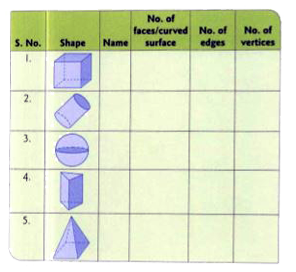Describe the molecular shapes of the following
SF4
BrF5
IF3
BrF3
To describe the molecular shapes of the compounds SF4, BrF5, IF3, and BrF3, we will follow a systematic approach to determine the hybridization and geometry of each molecule based on the number of electron pairs around the central atom.
1. Determine the Valence Electrons:
- For each compound, identify the central atom and count its valence electrons. Also, count the valence electrons contributed by the bonded atoms.
2. Calculate the Number of Electron Pairs:
- Use the formula:
Number of Electron Pairs=12(Number of Valence Electrons+Number of Singly Bonded Atoms−Negative Charge+Positive Charge)
- This will help in determining the hybridization.
3. Identify Hybridization and Geometry:
- Based on the number of electron pairs calculated, identify the hybridization and the corresponding molecular geometry.
Detailed Analysis of Each Compound:
1. SF4 (Sulfur Tetrafluoride)
- Valence Electrons: Sulfur (6) + 4 Fluorine (4 × 7 = 28) = 34
- Singly Bonded Atoms: 4 (Fluorine)
- Electron Pairs Calculation:
Electron Pairs=12(6+4+0−0)=5
- Hybridization: sp³d
- Geometry: Trigonal Bipyramidal (TBP)
- Structure: Four fluorine atoms are arranged in a TBP shape with one lone pair on the sulfur.
2. BrF5 (Bromine Pentafluoride)
- Valence Electrons: Bromine (7) + 5 Fluorine (5 × 7 = 35) = 42
- Singly Bonded Atoms: 5 (Fluorine)
- Electron Pairs Calculation:
Electron Pairs=12(7+5+0−0)=6
- Hybridization: sp³d²
- Geometry: Octahedral
- Structure: Five fluorine atoms are arranged in an octahedral shape with one lone pair on the bromine.
3. IF3 (Iodine Trifluoride)
- Valence Electrons: Iodine (7) + 3 Fluorine (3 × 7 = 21) = 28
- Singly Bonded Atoms: 3 (Fluorine)
- Electron Pairs Calculation:
Electron Pairs=12(7+3+0−0)=5
- Hybridization: sp³d
- Geometry: T-shaped
- Structure: Three fluorine atoms are arranged in a T-shape with two lone pairs on the iodine.
4. BrF3 (Bromine Trifluoride)
- Valence Electrons: Bromine (7) + 3 Fluorine (3 × 7 = 21) = 28
- Singly Bonded Atoms: 3 (Fluorine)
- Electron Pairs Calculation:
Electron Pairs=12(7+3+0−0)=5
- Hybridization: sp³d
- Geometry: T-shaped
- Structure: Similar to IF3, three fluorine atoms are arranged in a T-shape with two lone pairs on the bromine.
Summary of Molecular Shapes:
- SF4: Trigonal Bipyramidal
- BrF5: Octahedral
- IF3: T-shaped
- BrF3: T-shaped
- For each compound, identify the central atom and count its valence electrons. Also, count the valence electrons contributed by the bonded atoms.
- Use the formula:
Number of Electron Pairs=12(Number of Valence Electrons+Number of Singly Bonded Atoms−Negative Charge+Positive Charge)
- This will help in determining the hybridization.
- Based on the number of electron pairs calculated, identify the hybridization and the corresponding molecular geometry.
- Valence Electrons: Sulfur (6) + 4 Fluorine (4 × 7 = 28) = 34
- Singly Bonded Atoms: 4 (Fluorine)
- Electron Pairs Calculation:
Electron Pairs=12(6+4+0−0)=5
- Hybridization: sp³d
- Geometry: Trigonal Bipyramidal (TBP)
- Structure: Four fluorine atoms are arranged in a TBP shape with one lone pair on the sulfur.
- Valence Electrons: Bromine (7) + 5 Fluorine (5 × 7 = 35) = 42
- Singly Bonded Atoms: 5 (Fluorine)
- Electron Pairs Calculation:
Electron Pairs=12(7+5+0−0)=6
- Hybridization: sp³d²
- Geometry: Octahedral
- Structure: Five fluorine atoms are arranged in an octahedral shape with one lone pair on the bromine.
- Valence Electrons: Iodine (7) + 3 Fluorine (3 × 7 = 21) = 28
- Singly Bonded Atoms: 3 (Fluorine)
- Electron Pairs Calculation:
Electron Pairs=12(7+3+0−0)=5
- Hybridization: sp³d
- Geometry: T-shaped
- Structure: Three fluorine atoms are arranged in a T-shape with two lone pairs on the iodine.
- Valence Electrons: Bromine (7) + 3 Fluorine (3 × 7 = 21) = 28
- Singly Bonded Atoms: 3 (Fluorine)
- Electron Pairs Calculation:
Electron Pairs=12(7+3+0−0)=5
- Hybridization: sp³d
- Geometry: T-shaped
- Structure: Similar to IF3, three fluorine atoms are arranged in a T-shape with two lone pairs on the bromine.
- SF4: Trigonal Bipyramidal
- BrF5: Octahedral
- IF3: T-shaped
- BrF3: T-shaped
Topper's Solved these Questions
- P-BLOCK ELEMENTSBOOK - ICSECHAPTER - P-BLOCK ELEMENTSEXERCISE - ISC EXAMINATION QUESTIONS(PART-I)(OBJECTIVE QUESTIONS)(FILL IN THE BLANKS)
6 Videos
- P-BLOCK ELEMENTSBOOK - ICSECHAPTER - P-BLOCK ELEMENTSEXERCISE - ISC EXAMINATION QUESTIONS(PART-I)(OBJECTIVE QUESTIONS)(THE CORRECT ALTERNATIVE FROM THE CHOICES GIVEN :)
6 Videos
- P-BLOCK ELEMENTSBOOK - ICSECHAPTER - P-BLOCK ELEMENTSEXERCISE - EXERCISE (PART-II)(DESCRIPTIVE QUESTIONS)(SHORT ANSWER QUESTIONS)
67 Videos
- ORGANIC COMPOUNDS CONTAINING NITROGENBOOK - ICSECHAPTER - ORGANIC COMPOUNDS CONTAINING NITROGENEXERCISE - ISC EXAMINATION QUESTIONS ( PART-II DESCRIPTIVE QUESTIONS)
33 Videos
- POLYMERS BOOK - ICSECHAPTER - POLYMERS EXERCISE - ISC EXAMINATION QUESTIONS
10 Videos
Similar Questions
Describe the importance of the following: limestone.
View SolutionMention the geometrical shapes of the following molecules :
BeF2
View SolutionMention the geometrical shapes of the following molecules :
CH4
View SolutionMention the geometrical shapes of the following molecules :
NH3
View SolutionBriefly describe the structure of the following:
Ear
View SolutionBriefly describe the structure of the following:
Eye
View SolutionBriefly describe the structure of the following:
Brain
View SolutionDeduce the molecular shape of BrF3 on the basis VSEPR theory.
View SolutionDescribe the functions of the following:
eye
View SolutionFor the given shapes, complete the following table.

View Solution
